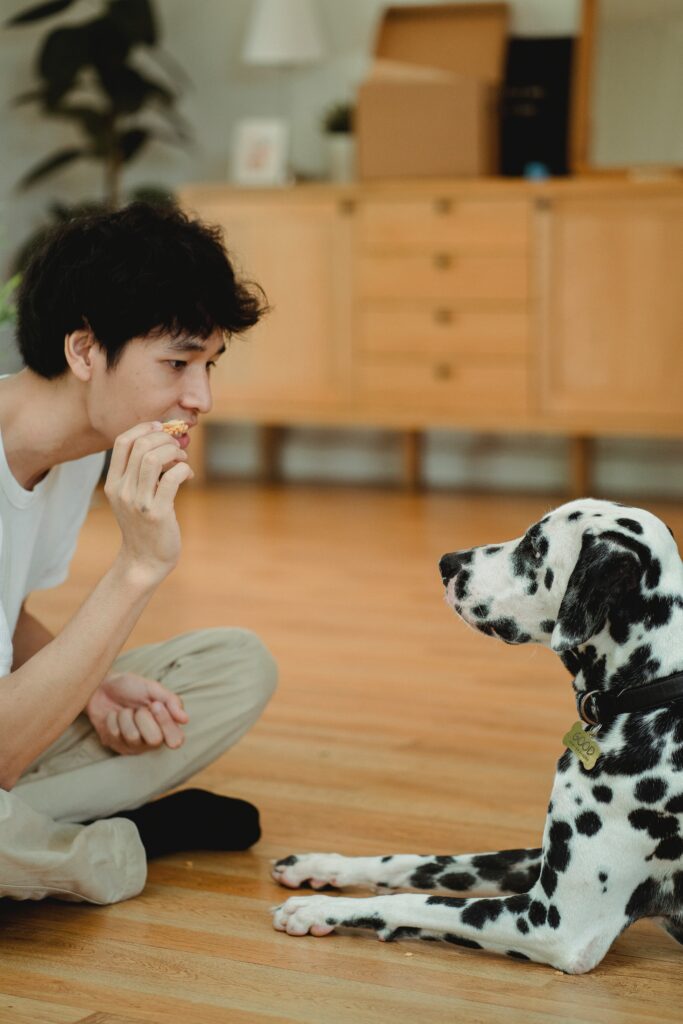 Your new dog training clients have no doubt heard a lot of conversation on television and online about different dog training techniques and tools. Chances are good some of them will ask why you’ve chosen a positive dog training philosophy.
Your new dog training clients have no doubt heard a lot of conversation on television and online about different dog training techniques and tools. Chances are good some of them will ask why you’ve chosen a positive dog training philosophy.
You can definitely answer their questions, but remember you also have a positive dog trainer superpower: Once your clients and their dogs start practicing your lessons, they’ll experience real results, and also enjoy seeing their bond with their dog grow stronger and stronger!
Let your training do the talking by keeping these four things in mind.
Your client chose you to train their dog
Remember, each human participant in your class chose you to be their dog trainer. Something about you, your web site, your messaging, or a great referral, prompted them to pick you. Even if it’s just that your class was perfectly timed to fit their schedule, they value you for that convenience. When you are asked questions about why you are suggesting positive training techniques, or if a client pushes back when you direct them to avoid over-correcting their dog in class, you don’t necessarily need to consider these questions as challenges. Go ahead and answer, but don’t feel compelled to have to over-defend your position. The training itself should soon show results.
Let clients express their own desire for a positive relationship with their dog.
In your introductions, you can ask your clients to briefly share why they originally adopted or purchased their dog, and how they envision their relationship over the next ten years. Companionship? Fun? Fitness? A friend for their child? A protector? Point out that these relationships flourish best if there’s a bond of trust between the dog and their human guardian — something that is strengthened by praise and other rewards, and remind them that — just as with kids — constant disapproval can result in an “obedient” companion, but not necessarily one who will trust you in a pinch. To build the relationship they dreamed of when they first thought about adding a dog to their life, positive training is the best way to get them there.
Show rather than tell: Positive reinforcement results in real learning
As you guide your client and their dog through your training classes using positive dog training techniques, including treats and praise to reward desired behaviors, your client will begin to witness subtle “ah ha!” moments from their dog, like:
- The awareness that shines in their dog’s eyes when they suddenly associate their rump voluntarily touching the floor with the cue word “Sit.”
- The controlled excitement their dog exhibits as they wait for the next cue word, realizing they can now understand what their guardian expects of them. They’ve learned a new language!
- That moment when their dog correctly interprets a cue and wiggles with joy under their guardian’s enthusiastic praise – then seems to forget their edible reward until it’s actually waved in front of their nose. Treats taste great, but their human partner’s approval and praise are wonderful, too!
As training sessions progress, your clients will begin to see their dog’s increased attentiveness and those wonderful physical flashes of happiness will become more frequent. Both humans and dogs will probably be experiencing increased harmony at home, too.
Seeing is believing. Your clients will see the growth of their increasingly relaxed and happy dog, via the body language you point out to them during positive training classes. They’ll also see their own satisfaction at home.
Point out those subtle successes!
Your client can sometimes miss the progress their dog is making if you don’t draw their attention to them. Point these moments out to them so they learn to catch the signs of their dog’s incremental – but very real – understanding. They’ll also be better able to see their increasing success as sessions progress. Instead of selling positive training to your client through words alone, they’ll be able to witness it themselves as their dog learns.
If clients share that they are happier with their dog’s behavior at home or on walks, don’t be shy about jumping in to celebrate, and reminding them that trust is what’s moving them forward.
Let your teaching win the conversation
Dog guardians receive so much contradictory information about dog training. Almost anyone who has a dog in their life has an opinion. While it sounds simplistic, the best way for you to be heard above all that conflicting noise is to show your clients how well positive training techniques work with their own dog, rather than feeling you have to spend too much of your valuable class time “telling.”
Need some extra confidence so you’ll feel comfortable letting your teaching lead the way? Immerse yourself in the success of positive reinforcement in dog training!
The Victoria Stilwell Dog Training Academy has both online and in-person tracks for their Dog Training Course. It’s a comprehensive starting place for new trainers, or a great way to reinvigorate your expanding career.



